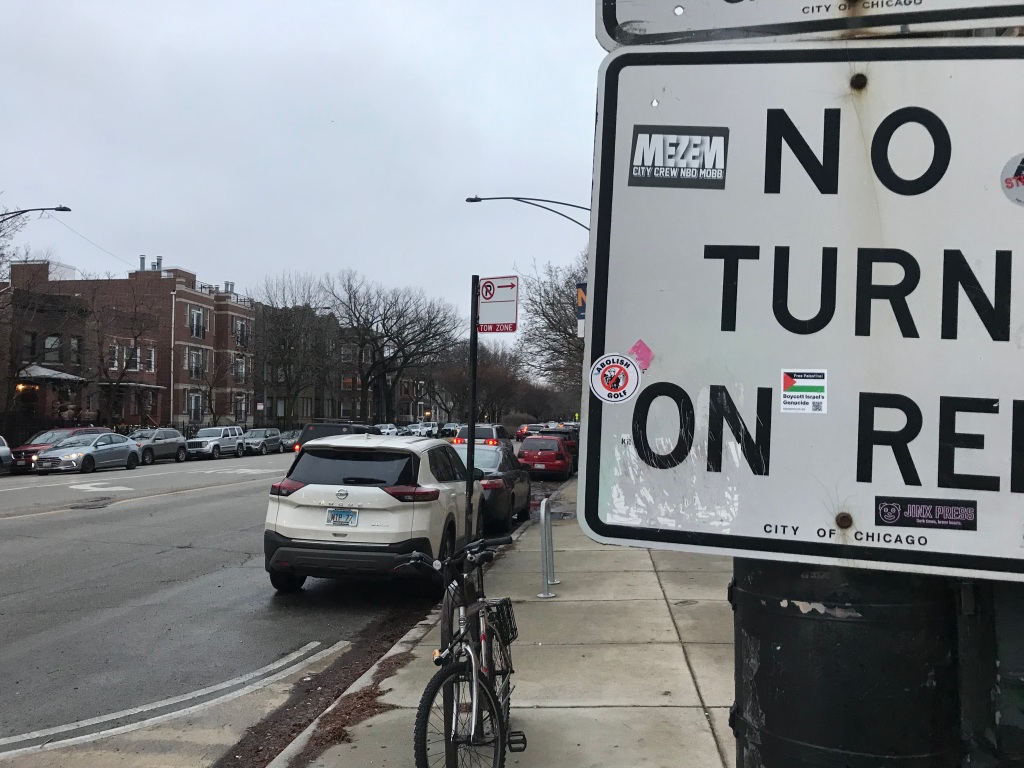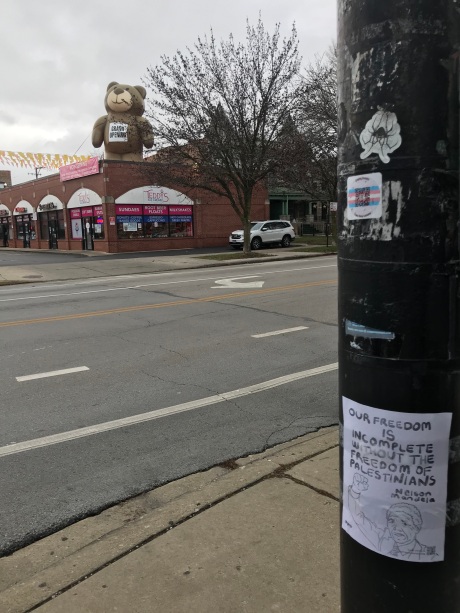

This comic caught my eye and triggered the memory of first seeing it as a child in National Lampoon, possibly when it was published in 1970, but I would guess that I found a back-issue a few years later (feels like fifth grade). I get a big kick out of it. It could have been some recognition of the absurdities of the cold war, then at its height, but more likely some nascent (and life-long) fascination with argumentation, here a mockery of propaganda that skewers the absurdities of the then- (not that it has diminished) shrill ideological accusations.
Satire often survives its Zeitgeist of origin. These cartoons, many blogsworthy, are on the window of a certified public accountant, and what with the Sino-Walmart Pact (cooperative?) supplying most of the formerly-known-as Free World with cheap consumer goods made by — I had better stop.
North Center, Chicago.











